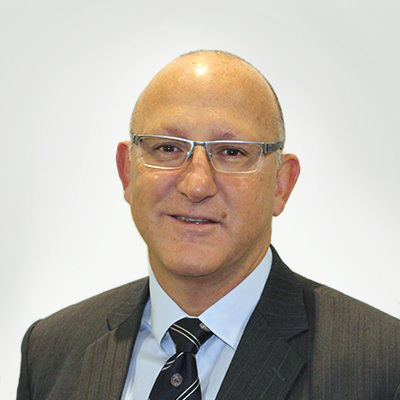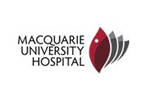Arthroscopy is a minimally invasive technique used by orthopaedic specialist surgeons to diagnose and treat a number of joint issues. It is a keyhole procedure that uses precise tube-like instruments called arthroscopes about the width of writing pen.
An array of instruments such as a camera and miniature surgical tools are attached to arthroscopes allowing an orthopaedic specialist surgeon to complete procedures in the joint without the need for open surgery. They also have the added benefit of a quicker recovery time because the incisions or cuts needed for surgery are much smaller.
Arthroscopy has a number of uses in ankle joint treatment including removing diseased and damaged soft tissue (arthroscopic debridement), removing loose bone fragments, and as adjunctive treatment in ligament and tendon repair. In foot and ankle treatments, it is used commonly to repair the ankle joint for damaged or torn ligaments and restore structure and stability to the ankle and foot.
How is the surgery performed?
In most cases, small incisions or cuts will be made on the outside of the ankle. This will allow the orthopaedic specialist surgeon to insert a camera for viewing the joint and also use small surgical instruments needed to complete the joint procedure.
For tidying up or debriding a joint, the orthopaedic specialist surgeon will remove damaged or diseased soft tissue (usually cartilage), smooth out rough joint surfaces, remove free floating bones and growths such as spurs. This a common treatment method for relieving joint pain in osteoarthritis and rheumatoid arthritis.
How long will I be in hospital?
Because it is a minimally invasive procedure, arthroscopy can be done as a day surgery procedure and you should be discharged home within 24 hours of the procedure being complete.
Will there be pain involved?
Prior to surgery, you will be given general anaesthesia and a local injection around the foot area, so you remain pain-free during and after the surgery. During the recovery period, you may be prescribed some stronger painkillers to reduce any discomforts. In the recovery and rehabilitation period, you may experience some discomforts, but this can be managed with painkillers.
What happens after the surgery?
After the surgery is complete, your foot will be bandaged, and your wounds dressed. Afterwards you will be sent to the recovery unit and monitored for a period of time to allow the general anaesthesia to wear off and your body vitals to normalise. It is important at this time to report any discomfort, pain, or nausea you may have to the doctors as they can assess your need for painkillers or anti-nausea drugs when you are discharged.
You will be referred to a physiotherapist who will start you on a recovery programme. It is recommended that you follow the guidance of the physiotherapy programme as it will speed up your recovery drastically and allow you to get back on your feet sooner.
If you are well, you should be discharged from hospital on the same day.
What should I do in the first week after surgery?
In the first week after the surgery, you should attempt to minimalize moving around unless necessary. In most cases, you may weight-bear on the operated foot as tolerated and occasionally use mobility aids such as crutches in the first two weeks.
Attempt to elevate your foot to the level of your heart to reduce swelling and take painkillers whenever you experience pain. You may be prescribed some anti-inflammatory medication for six weeks after surgery such as ibuprofen.
You may find some blood ooze at the site of the surgery which is normal. However, if you notice bleed does not stop, please contact the orthopaedic specialist surgeon urgently.
When will I be able to walk?
In most arthroscopy cases, you should be able to weight bear on the foot immediately after the procedure. The only exceptions to this would be if the procedure involved fusion of the ankle joints (arthrodesis) or extensive repair of the foot bones or ligaments and under those circumstances, you should avoid wearing bearing for 6-12 weeks after surgery.
When can I return to work?
Healing and recovery times are different for each individual person. In general, you should be able to return to work in 2 weeks if you mostly sit at work. You should allow for up to 6 weeks to recover if your work involves manual labour.
What are some risk and complications of arthroscopy?
Before undergoing any surgery, an orthopaedic specialist surgeon will discuss risks and potential complications with you and answer any questions you might have.
Some risks include:
- Wound infection: this occurs in less than 1% of all procedures and can be treated with antibiotics
- Nerve damage: there is a small risk to losing sensation of the skin in area surrounding the surgical site, but this is very rare.
- Blood clots: with any surgical procedure, there is a small risk of the blood clotting in the vessels causing pain and swelling. If you have known risk factors associated blood clots, the specialist may prescribe you with some blood-thinners during the recovery period. The risks are present but small. If you experience abnormal swelling and pain of the leg, please contact the specialist urgently.
Follow-up appointments
The typical follow-up appoints after you have been discharged is as following:
10-14 days after surgery
At the first appointment, the orthopaedic specialist surgeon will remove your bandages and wound sutures.
Six weeks after surgery
At this appointment, your orthopaedic specialist surgeon will review your progress in terms of ankle functionality and movements. If all is well, you will be discharged.
Important: Information is provided for guidance only. Individual circumstances may differ and the best way to approach a condition is by individual medical consultation where a specialist can tailor a treatment plan to suit your needs.






